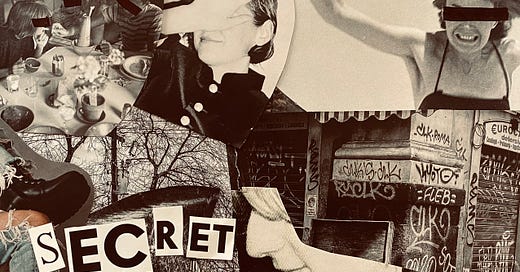The vulnerability of writing weird plays.
Here is a Secret Letter for my paid subscribers. ✍️ Inside: how writing strange plays opens you up to criticism & a new in-progress playwriting workbook.
Welcome to Secret Letters, a paid subscriber perk of Letters from the Homestead. These monthly letters are exactly what you think: secret dispatches that feel a little too vulnerable to put in a free newsletter.
Thank you, as always, for reading and supporting my work.
When your plays come out weird…
I sat down to write my first serious play about 10 years ago. While finishing my doctoral dissertation and teaching literature, I would go to a local coffee shop early in the morning on weekdays and pound out my play. It took me a year to write that first full-length work, and when I finished it, I was struck by how… weird it was.
I’m not sure what kind of play I expected to write, but it felt natural to use impossible circumstances to tell the story I wanted. Many years later, I’m interested in how friends, critics, and colleagues describe my plays as “zany,” “kooky,” “non-traditional,” “otherworldly,” or just plain “weird.” I’m not arguing with them. My plays are all of those things.
Right now, I’m working on a playwriting workbook as part of a grant I received from the St. Louis Regional Arts Commission—the topic is “writing weird plays,” with a special section on how to start a one-actor piece. I’ve taught workshops on this topic before, but I wanted to get some of these ideas down in writing in a free, open-access format for people who feel the pull toward impossible plays, too.
That’s really what a weird play is to me: a weird play is any play that writes from a position of impossibility.






